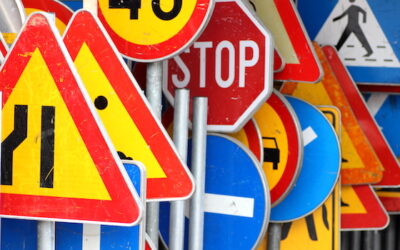A crossing is a crossing, isn’t it?
The safest place to cross any road is of course a pedestrian crossing. But what many pedestrians and learner drivers may not be aware of is there is more than just one type of crossing in the UK. Each has its unique rules and regulations and some are meant for a specific purpose, individual or animal. In order for both driver and pedestrian to remain safe, there needs to be an understanding of how each differ. There are 6 types of crossing and in this article, we are going to look at each in turn – but before we do:
What is fundamental to all crossings?
You must never park on a pedestrian crossing. In order to allow for maximum vision both for pedestrian and driver, some crossings have a zig-zag area either side of the crossing or yellow lines: this area is also a no parking zone. An examiner would be especially attentive to how a learner driver approaches a crossing. You should be using your mirrors, be highly alert to your surroundings and in control of the speed of the car. If you have to stop and are then ready to move off, you should carefully check that it is safe to do so. The examiner will be looking for courtesy and consideration to the pedestrian.
Zebra Crossing
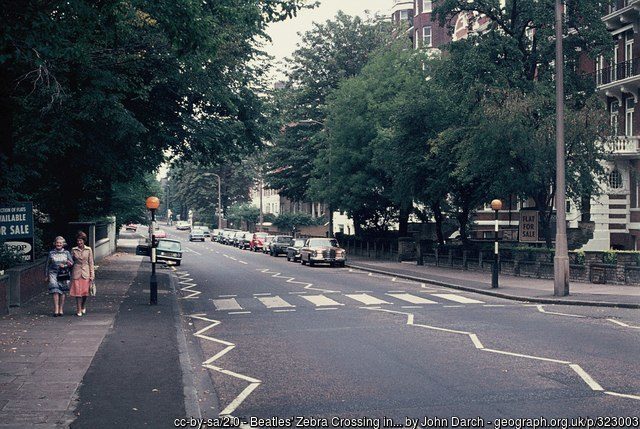 Arguably the most famous zebra crossing in the world – the Beatles’ Abbey Road crossing
Arguably the most famous zebra crossing in the world – the Beatles’ Abbey Road crossing
John Darch and licensed for reuse under this Creative Commons Licence
This is perhaps how most people would describe a crossing. The black and white lines are meant to warn drivers to reduce speed and be extra wary of pedestrians. There will be no traffic lights at a zebra crossing but there may be Belisha beacons (tall black and white striped poles with a yellow light on top) at each end. It may also be split into 2 on wider more busy roads with an island in the middle. The pedestrian crosses one side of the road and waits on a tarmacked area before crossing the other side when it is safe to do so.
Keep an eye out for pedestrians wishing to cross, and use your mirrors so you know where cars are behind you in case you need to slow down and stop. You must give way if someone steps onto the crossing. Stop before the white dotted line, not after it.
School crossing
A school crossing, in essence, appears the same as a zebra crossing. The difference is it will be located near an educational institution. To alert you to this, you may see the following sign:
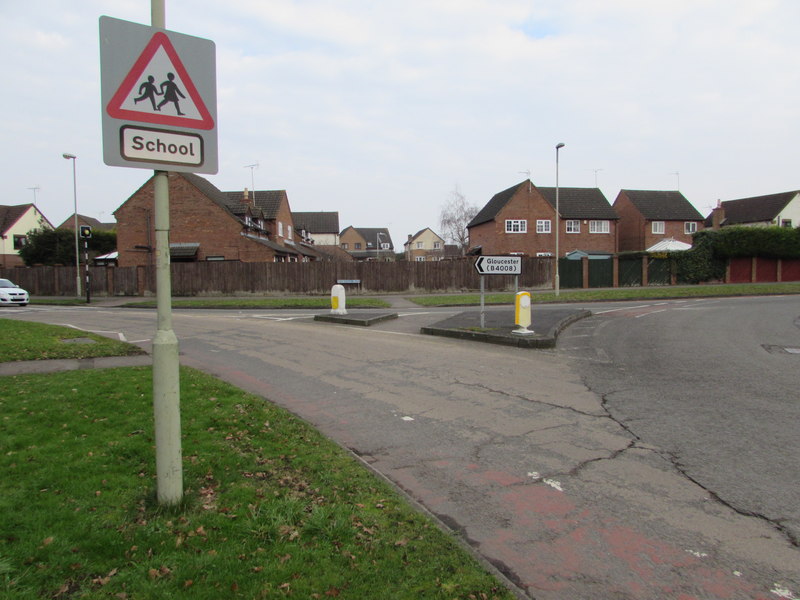 Jaggery and licensed for reuse under this Creative Commons Licence
Jaggery and licensed for reuse under this Creative Commons Licence
It may also be patrolled by a crossing patrol officer – commonly known as a lollipop man or lady. The officer will signal to you to stop with the “Stop for Children” sign when they are going to guide children across the road. It is illegal not to stop your car when you see the sign. Apart from the serious injuries which may result, you could also face a fine of up to £1000, disqualification from driving, and three penalty points on your driving licence.
Pelican crossing
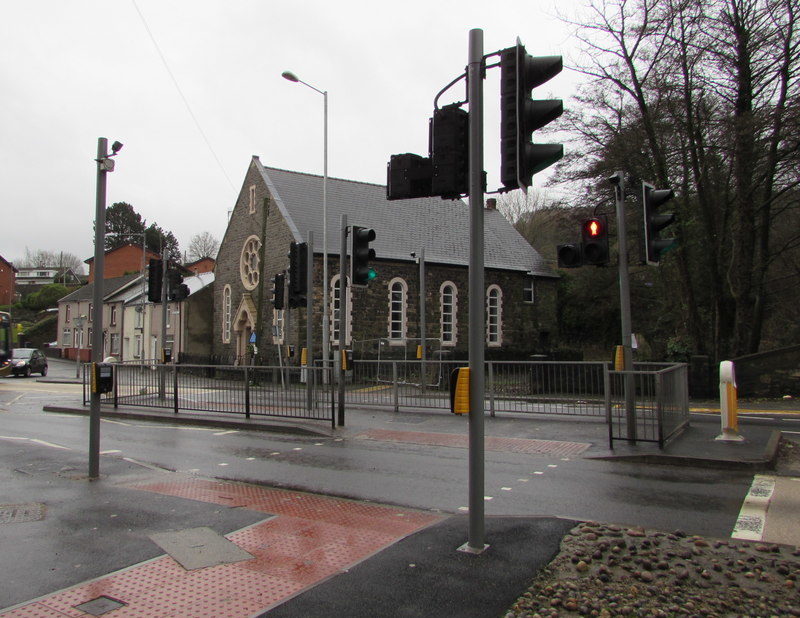 Jaggery and licensed for reuse under this Creative Commons Licence.
Jaggery and licensed for reuse under this Creative Commons Licence.
The name for this crossing derives from “Pedestrian Light Controlled” and in a nutshell, and with a little artistic licence, that is what it is. As well as traffic lights directing the traffics behaviour, the pedestrian can see lights in front of them which tells them when it is safe to cross the road. (A red man means don’t cross; and a green man means cross). Some Pelican crossings also have a bleeping noise which accompanies the green man, to enhance directions.
As you approach the crossing be ready for the lights changing. Be ready to reduce speed and stop, so frequently check mirrors and reduce your speed. When the traffic light is red you must stop. The light will after a time start flashing amber which means you should get ready to move off, but be aware of pedestrians still crossing. You can move off at this time but do so with caution – keep aware of pedestrians crossing at the last second. The traffic light will then turn to green.
Puffin crossing
The name for this crossing derives from its full title: Pedestrian User-Friendly Intelligent crossings. They use sensors fitted to the top of the traffic lights to sense whether pedestrians are waiting and can adjust the lights accordingly. As a pedestrian, you can also press a button on the traffic light pole and the little red or green man will be shown there. Once the green man shows it is safe to cross.
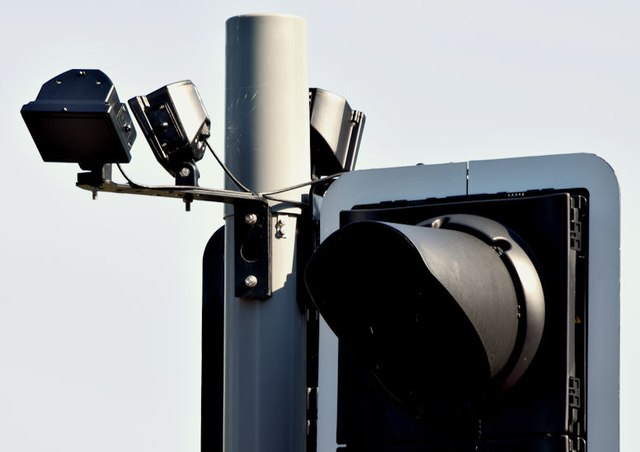 Albert Bridge and licensed for reuse under this Creative Commons Licence.
Albert Bridge and licensed for reuse under this Creative Commons Licence.
Very much like a pelican crossing you need to be controlling your speed, using your mirrors and be extra aware of pedestrians as you approach. There will be zig-zag lines on approach and also railings at the edge of the pavement sometimes. Be aware that there is no flashing amber light here – just normal traffic light sequencing.
Toucan crossing
 David Lally and licensed for reuse under this Creative Commons Licence.
David Lally and licensed for reuse under this Creative Commons Licence.
This type of crossing’s unique factor is more apparent to the pedestrian than the driver. In line with all the UK crossings it has been named after an animal and is so called because two can (toucan) cross. In other words, cyclists can cross here as well as pedestrians. It will appear the same in some respects (traffic lights without flashing amber, Iron railings, Zig-zag lines sometimes) and you should use mirrors, and speed control as before. Be especially aware that cyclists may be moving on and off the crossing at faster speeds – so be alert at all times.
Pegasus crossing
 terry joyce and licensed for reuse under this Creative Commons Licence.
terry joyce and licensed for reuse under this Creative Commons Licence.
The Pegasus crossing is not so common and tends to be found outside places where there are likely to be horses (such as race courses). Again zig-zag marking and iron railings may be apparent and traffic lights will not have flashing amber. For riders, there is also a high-level button to push as in a puffin crossing. Be especially alert to horse’s behaviour, they can be scared by traffic and sometimes act in an unpredictable manner. Control speed and move away from the crossing slowly.
It’s important to know the differences between the crossings for your theory and practical driving tests, but it’s also important to remember them when you have passed and are driving alone. If you’re learning to drive it might feel like there’s just too much to learn but if you take your time and continue learning even when you’ve passed, it’ll become second nature. Keep an eye on our blog for more tips and essential information for new and learner drivers.



